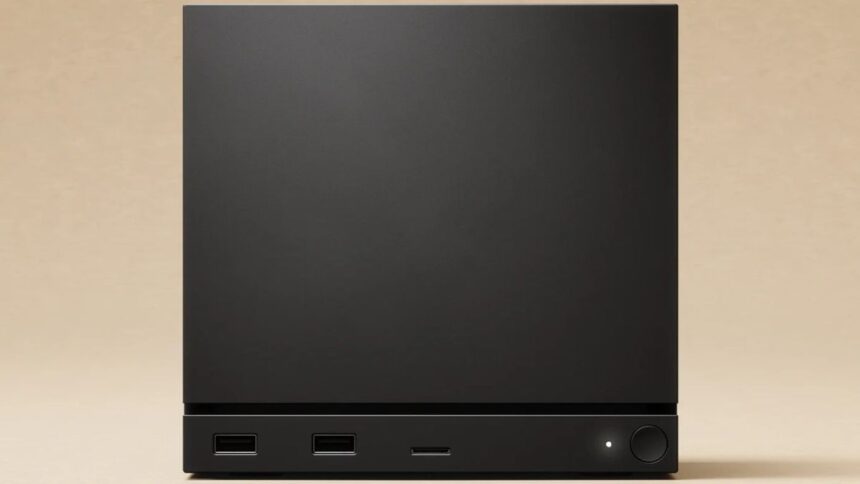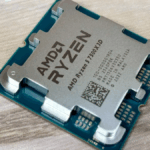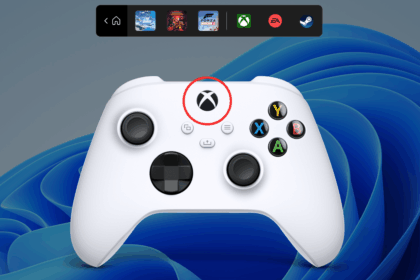Valve officially introduced the Steam Machine on Wednesday (12), a small-form-factor gaming PC designed to bring the full Steam experience to your TV or monitor through SteamOS.
The new console is powered by an AMD Zen 4 processor with six cores paired with an RDNA 3 GPU featuring 28 compute units and 8 GB of GDDR6 memory. It also includes 16 GB of DDR5 RAM and supports storage options of up to 2 TB.
According to Valve, the Steam Machine is six times more powerful than the Steam Deck, capable of delivering gameplay at 4K resolution and 60 FPS with the aid of FSR upscaling technology.
Built on SteamOS, the system runs virtually the entire PC library available on Steam — including many titles originally released for PlayStation and Xbox — but the interface has been optimised for larger displays to offer a console-like experience.
Valve confirmed that both the Steam Machine and its related accessories are scheduled for release in early 2026, though pricing and an exact launch date have not yet been announced.
Steam Machine Offers Broad Accessory Compatibility
Valve has confirmed that the Steam Machine will support a wide range of accessories — far beyond the Steam Controller and its upcoming SteamVR headset. Essentially, any peripheral that works with a regular PC will also function seamlessly with the new console.
This means gamers will be able to use familiar devices such as PlayStation DualSense controllers, Xbox gamepads, mice, keyboards, and other accessories without issue. In short, if you already use a controller or peripheral on your computer or laptop, there’s no need to buy new hardware to enjoy your games on the Steam Machine.
Steam Machine Adopts a True Console Identity
To avoid repeating the missteps of its earlier Steam Machine initiative, which suffered from a confusing launch and mixed messaging, Valve is taking a different approach this time. The new Steam Machine will fully embrace its role as a gaming console, even though it technically remains a compact PC.
Players will be able to wake the system using the Steam Controller, instantly suspend and resume gameplay, and access cloud saves and other Steam ecosystem features with ease — offering a seamless, console-like experience from the living room.
That said, Valve emphasises that users will still retain the flexibility of a PC. Much like the Steam Deck, owners will be able to install other operating systems and run games from various storefronts, including Epic Games Store, GOG, and others, expanding their library far beyond Steam itself.
Specifications of Valve’s new console
One of the standout aspects of the new Steam Machine is its hardware configuration. While components such as the CPU, GPU, and RAM will be fixed, Valve will offer two storage options — 512 GB and 2 TB — giving players some flexibility depending on their needs.
| Steam Machine Specifications | |
| General | |
| Processor | AMD Zen 4 with 6 cores and 12 threads (semi-custom) with up to 4.8 GHz and 30 W thermal power |
| Graphics Card | AMD RDNA 3 8GB GDDR6 VRAM, 28 CUs (semi-custom), up to 2.45 GHz and 110 W thermal power |
| Memory | 16GB DDR5 RAM |
| Energy | Internal bivolt source (110 to 240 V) |
| Storage | 512GB NVMe SSD or 2TB NVMe SSD |
| Storage expansion | Compatible with high-speed microSD |
| Operating System | SteamOS 3 (based on Arch Linux) |
| Connectivity | |
| WiFi | Wi-Fi 6E 2×2 |
| bluetooth | Dedicated antenna for Bluetooth 5.3 connection |
| Steam Controller | Built-in 2.4GHz wireless adapter |
| Entry and exit | |
| Display | DisplayPort 1.4 (up to 4K at 240 Hz or 8K at 60 Hz) and HDMI 2.0 (up to 4K at 120 Hz) |
| USB | 2x USB-A 3.2 Gen1 (front), 2x USB-A 2.0 (rear), 1x USB-C 3.2 Gen 2 (rear) |
| Network | 1x Gigabit Ethernet port |
| LED bar | 17 RGB LEDs |
Although real-world performance remains to be seen, early impressions are promising. The system uses AMD’s Zen 4 architecture, a significant leap ahead of the Zen 2 chips powering the PlayStation 5 and Xbox Series X|S. It also supports AMD’s native upscaling technology, a feature currently found only on next-generation systems like the Switch 2 and PlayStation 5 Pro.
To add some flair, Valve has included RGB lighting on the front panel. The console features 17 individually addressable LEDs that not only enhance aesthetics but can also indicate system status or be customised to match the user’s setup.
Valve will even allow players to swap out the front panel with personalised designs, making it easier to tailor the Steam Machine’s look to their own style and gaming space.
What is its significance in the gaming industry?
Steam Machine Could Challenge Consoles — and Shape the Future of Gaming
The Steam Machine has the potential to become a serious competitor to the PlayStation 5 and Xbox Series X|S, but Valve’s ambitions seem to go even further. With Microsoft reportedly working on the Xbox Magnus, a hybrid system that blends console and PC capabilities, Valve’s new hardware may have arrived at the perfect time to spark a shift in the gaming landscape.
If Valve’s approach succeeds, Microsoft’s next console could already feel a step behind before it even launches. On the other hand, if the Steam Machine fails to deliver, it might erode public trust in hybrid gaming systems long before the Magnus hits the market.
Still, one of the main limitations of the Steam Machine is its non-upgradable components. Unlike traditional gaming PCs, users won’t be able to swap out the CPU, GPU, or other core hardware — a drawback for those who hoped modular upgrades would become the new norm in future consoles.
For now, details such as pricing, performance benchmarks, and regional availability remain under wraps. Valve is expected to share more information soon, and those announcements will be crucial in determining whether the Steam Machine can truly redefine what a gaming console can be.











